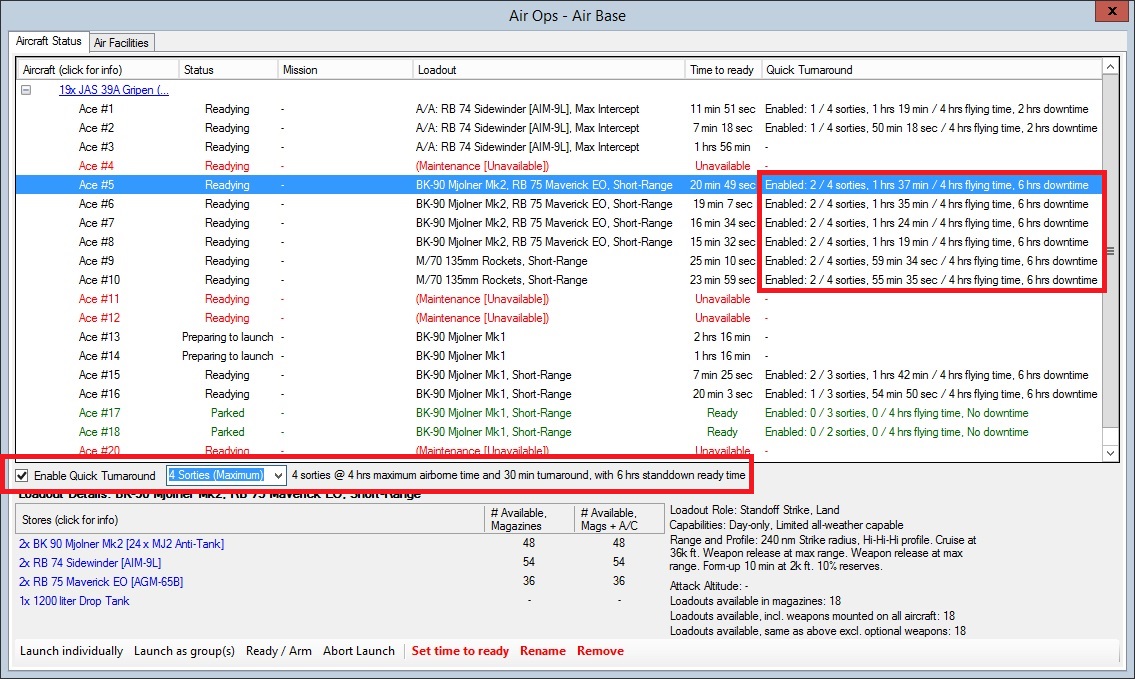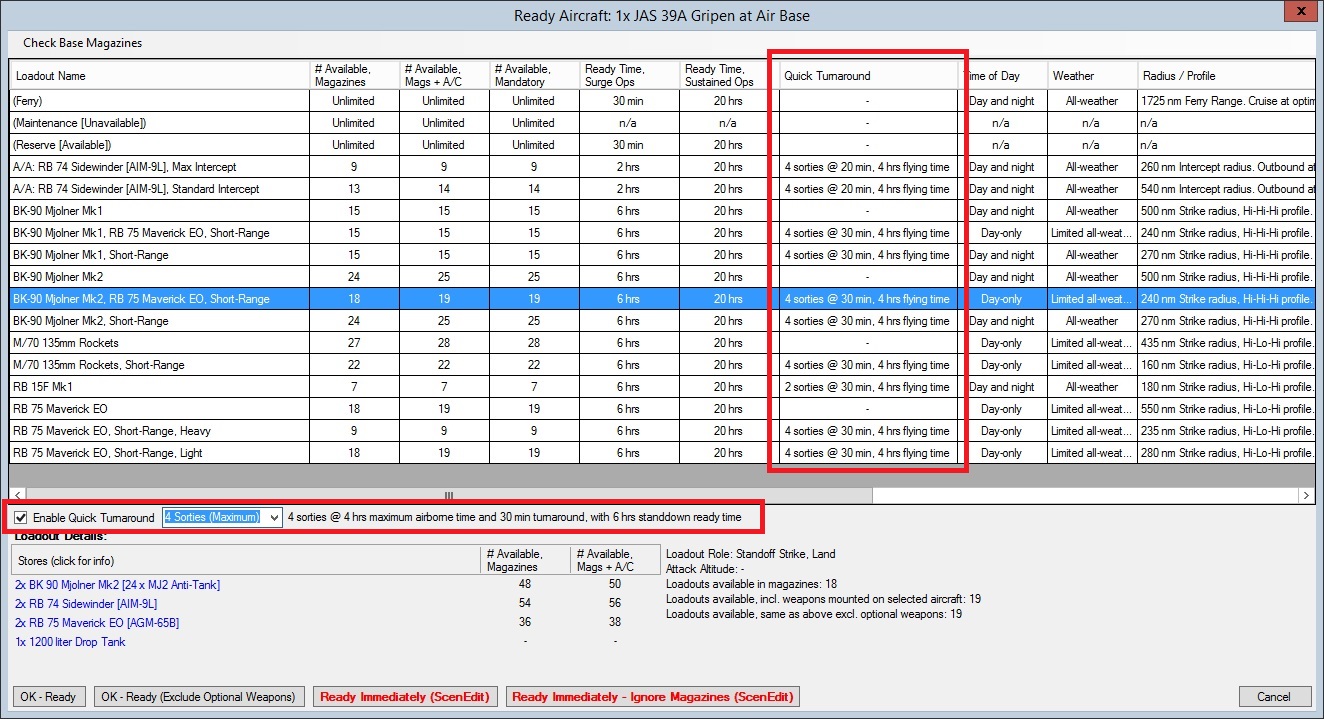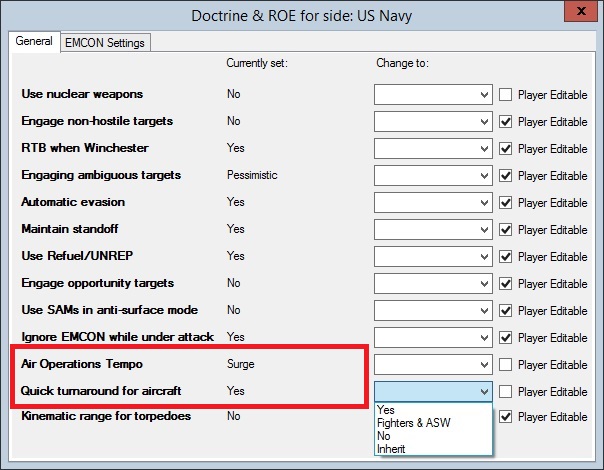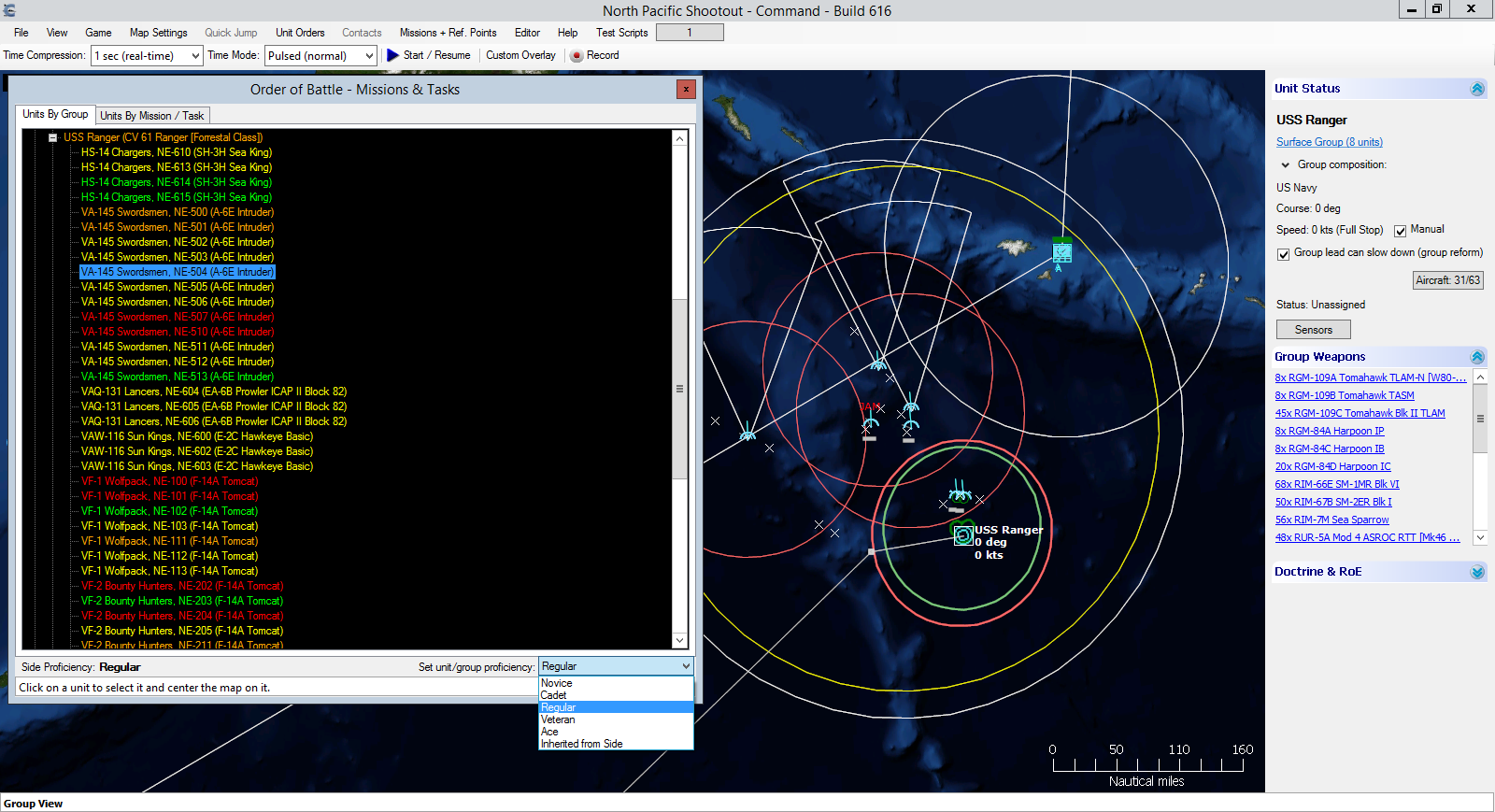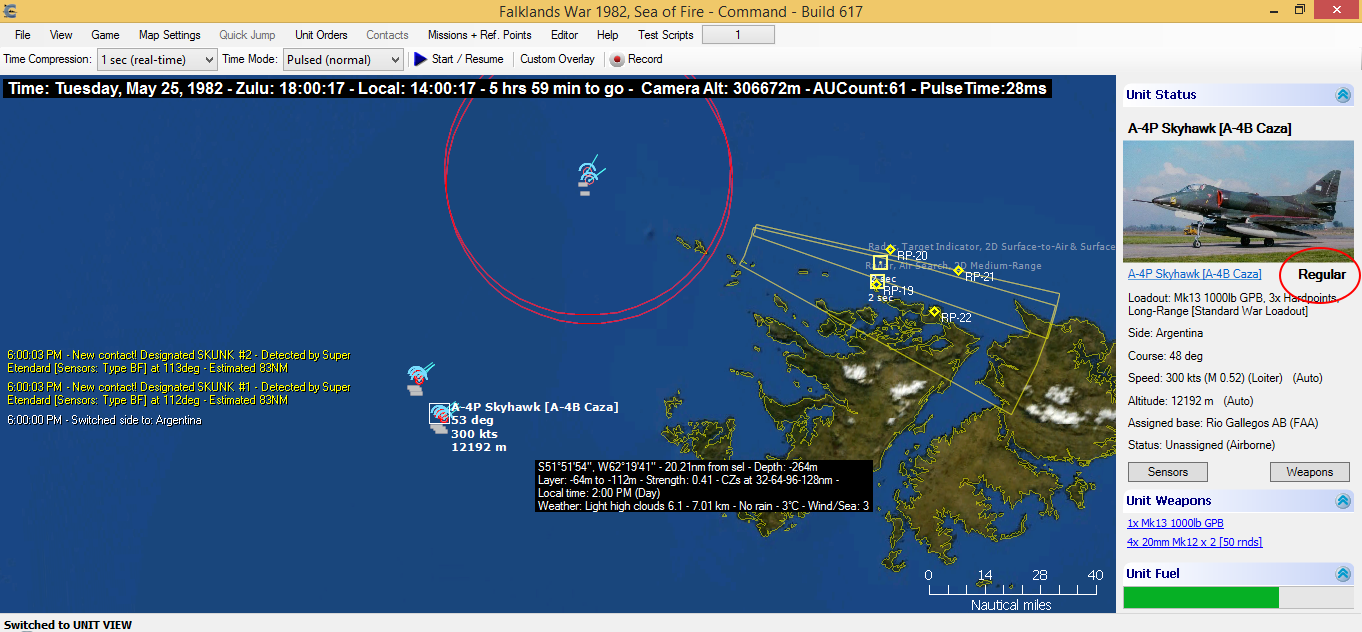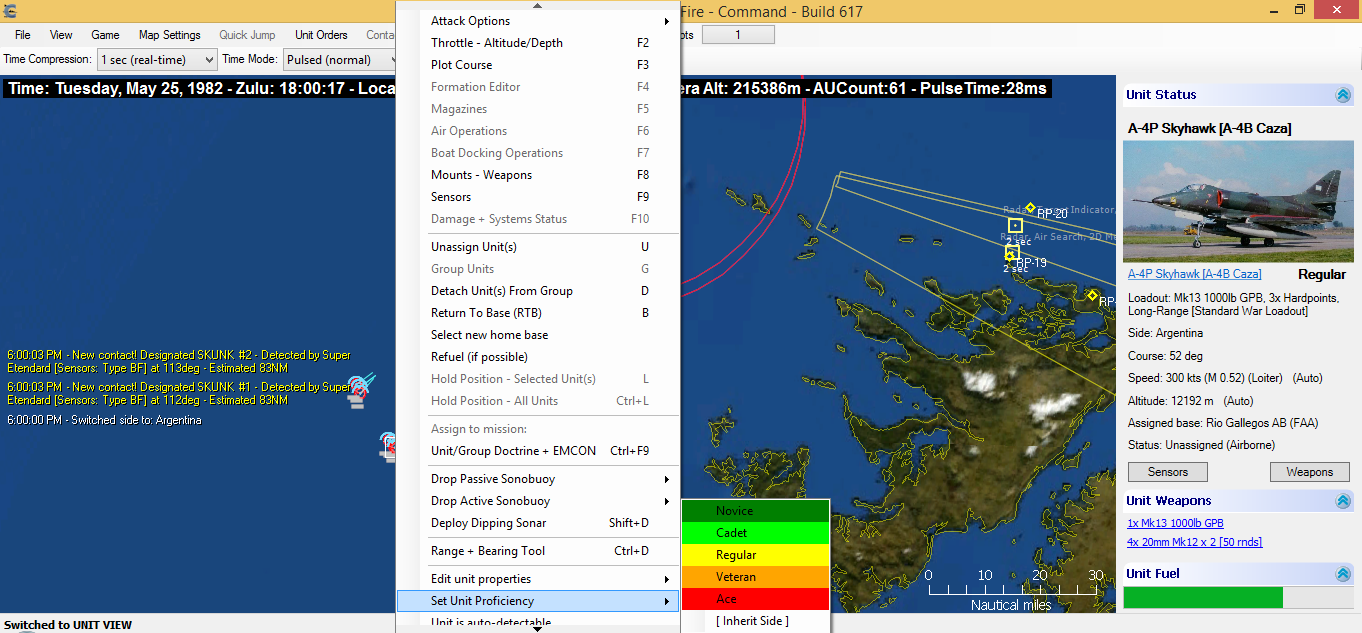Command v1.06 – The new features Part I
As usual, it’s been a very busy time for the WarfareSims crew.
The September Steam launch was very successful and once again exceeded sales estimates by a wide margin, as well as providing us with some very valuable feedback for the way forward. The Christmas sale is now in effect and again the numbers are very strong. Baloogan, a staunch fan of Command (and not unimportantly a man who shares our vision for it) has joined WarfareSims as an additional member of the development team and is already contributing his valuable skills to the game’s ongoing development.
Version 1.06 is the next major Command public update, expected to be delivered within December. Simply put, there is a lot in it. It has something we have been working on for a long time (and have been wishing for since the days of Harpoon2/3), lots of improvements directly requested by the user community and a veritable armory of new scenario-editing tools that are certain to make scenario authors salivate. Let’s take a look.
Surge & Quick-turnaround times in Air Operations
The rationale for this new feature is comprehensively explained on a separate article, so here we’ll discuss the “what” and “how” rather than the “why”.
In short, players can now keep a constant sustainable “campaign” operational tempo as well as go to “Day-1” super-high sortie rates with very fast (30 mins or even less) turn-around times for loadouts supporting them. There is a price for this however: After a certain period of hyperactivity, aircraft _have_ to stand-down for an extended period of maintenance (and pilots badly need to rest).
The super-high sortie rate option (aka “Quick Turnaround” capability) is available only for a specific range of loadout types, typically those that do not need extensive mission briefing and coordination with other assets, for example close air-support (CAS) and air defence loadouts. So for example an A-10A Thunderbolt II can now indeed fly a series of quick CAS sorties but then has to stand down. Relevant loadouts have a “Quick Turnaround” option that allows aircraft to fly a certain number of short duration sorties in quick succession with a maximum overall airborne time limitation. For example, 3 sorties with 4 hours total flying time and 20 minute turnaround between each. The aircraft will then step down for the period set by the loadout’s Surge Operations or Sustained Operations ready time.
Let’s take a look at a practical example. In this screenshot (click for full size) the highlighted JAS-39A Gripen has the QT option enabled, which allows a maximum of four rapid-fire missions (just 30 mins turn-around) to be flown with a maximum air-time of four hours. On the “Quick Turnaround” column we see that the aircraft has already flown two of the four quick sorties and spent 1 hr 37 mins in-air (out of the four hours total available), after which it will be forced to stand down for six hours for rest and maintenance. It is now up to the player to decide how best make use of the remaining sorties.
It should be noted that aircraft flying Quick Turnaround sorties may be re-armed with a different loadout without having to step down, granted the new loadout is quick-turnaround capable. This means you can fly the first two Quick Turnaround sorties with iron bombs, re-arm with rockets for the third sortie, and cluster bombs for the fourth.
There are three limiting factors for quick turnaround: flying time, number of sorties (land-refuel-rearm-takeoff), and day/night capability. All three are used to determine if the aircraft can be quickly turned around to fly another sortie, or has to step down.
The player can easily determine if a given loadout supports quick-turnaround when browising through loadouts on the “Ready Aircraft” window. Here we see that CAS, air-defence and short-range strike loadouts enable Quick Turnaround while long-range strike loadouts, which take a lot more preparation and coordination, do not.
The distinction on whether to have a low (peacetime) or wartime (high) operational time is configurable as a doctrine setting and thus, like all other similar settings, can be configured by both the player and the scenario author at the side-, mission-, group- and individual-unit level. So for example you can simulate an entire country being at peacetime level of activity while one or two bases are kept in high tempo as a “quick reaction” force. Quick-turnaround ability is also configurable as a separate setting. (So for example a base may be on wartime tempo but not be allowed to use super-high sortie rates in order to instead operate on a 24/7-sustainable rate. Keeping up a steady pace is frequently more important than going all-out.)
There is also a corollary benefit from those improvements, which resolves a longtime players bane: When an aircraft, fully loaded and prepped for a mission, switches to a different loadout, it is not punished for it by going through the entire ready cycle again. Instead, only the time necessary for the actual re-arming is considered.
Being able to simulate historically-accurate bursts of air activity without resorting to the ridiculous “30 mins for everything and everyone!” setting of older games has been one of the holy grails of air-ops enthusiasts, and v1.06 finally brings this dream to reality.
Unit-level proficiency values
This is a direct response to a popular user request. When we introduced side-level proficiency ratings, the addition was welcome by players and scen authors alike. A frequent request, however, was to be able to combine different skill levels on the same side so as to emulate groups of forces with different skill or readiness levels, as is common in most military arms.
Pre-v1.06, doing this required the workaround of defining multiple allied sides and setting the proficiency level differently on each of them. Version 1.06 allows definining the skillset on an individual unit level, making this workaround unnecessary.
There are two ways to view and (in ScenEdit mode only) alter the proficiency level of an individual unit:
* Through the ORBAT window:
In this example you can see the individual units being listed in different colors that represent their proficiency levels (from the dark green of novices all the way to the red of the aces). As this shot was taken in Scenario Edit mode, the dropdowm menu for setting the selected unit’s proficiency is also visible. A unit can be set to either auto-inherit its parent side’s overall proficiency level (which is the default behavior) or override it with a custom level of its own.
* Through the “Unit Status” window and the right-click menu:
A unit’s proficiency level appears next to its class DB-hyperlink on the “Unit Status” window:
If running the scenario in editor mode, you can change the proficiency level of one or more units by selecting them, bringing up the unit-context menu (mouse right-click or context-menu key), clicking on “Set Unit Proficiency” and selecting the desired level (or setting it to auto-inherit from side):
Apart from making them configurable on a unit level, skill values now also have an even greater effect (e.g. when performing unguided weapon attacks, and in damage control) and their effects / modifiers are intensified. Novices and to a lesser extent cadets are now really lamb to the slaughter, while ace crews almost walk on water. Without knowing in advance just how capable an adversary you are facing (unless reliably pre-briefed), the ghastly uncertainties of combat become even more pronounced.
Coming up next: Part II – Game-changer, thy name is Lua




